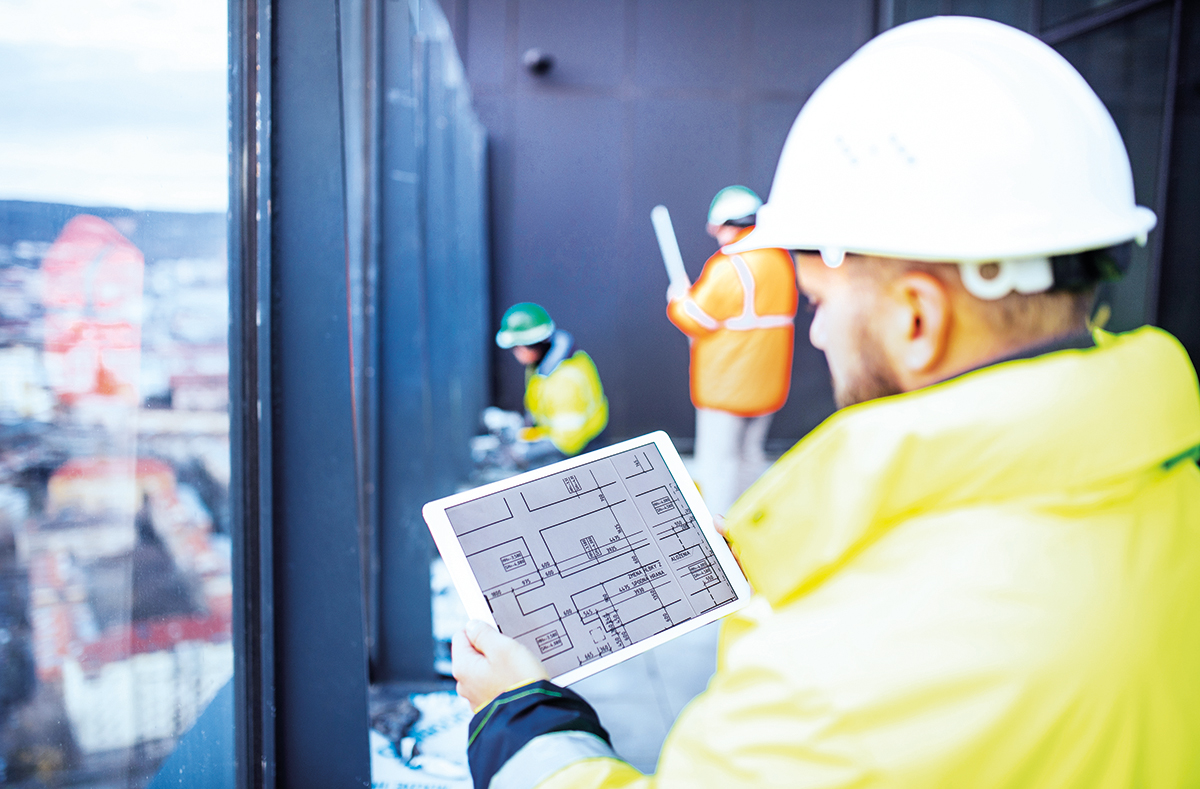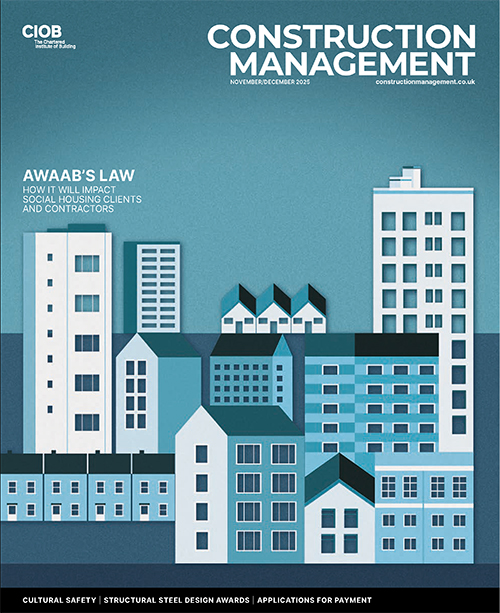
In this CPD, Burges Salmon lawyers review the duties and obligations of the principal contractor and principal designer roles under the new building safety regime.
What you will learn in this CPD
- The duties of the principal contractor and principal designer
- The competency requirements of these roles
- The consequences of non-compliance
A key aspect of the building safety regime introduced by the Building Safety Act 2022 and the Building Regulations etc (Amendment) (England) Regulations 2023 (BRAE Regulations) is the new dutyholder regime and competence requirements for construction teams undertaking “building work” in England (as defined under the building regulations).
A core aim of this new dutyholder regime is to place a statutory basis for ‘best practice’ in ensuring compliance with the building regulations and improving competence across the construction industry. While the terminology used mirrors that of the Construction (Design and Management) Regulations 2015, the new roles introduced, namely the client, principal contractor (PC) and principal designer (PD), are separate and distinct.
Where there is more than one designer or contractor on a project, while the client under the new regime is required to appoint a PD or PC, the client and designer or contractor being appointed must be aware of their duties and confident that they hold the required competence and organisational capability for the role.
When reviewing the specific duties on the PD or PC at a high level, the roles appear similar in nature, albeit one focuses on design work and the other on building work. However, the duties on the PC are comparatively greater. This is unsurprising given the crucial importance of contractors ensuring compliant design work is then accurately incorporated into the building.
The section below provides an overview of these duties, reflecting the general duties on those undertaking design or building work, as well as additional duties placed on those appointed as PD or PC.
Competency requirements
All those involved in design and building work on construction projects in England to which the regime applies must be competent for the role they undertake.
In particular, before accepting an appointment as PD or PC, the designer or contractor must be certain that:
- where the person is an individual, they hold the skills, knowledge, experience and behaviours necessary;
- where the person is not an individual, it holds the organisational capability (having the right policies, procedures, systems and resources in place), to:
- carry out the building or design work in accordance with all relevant requirements; and
- fulfil the PC or PD functions as summarised above.
In making this assessment, it is important to note that “competence” is not defined under the BRAE Regulations and there is no prescriptive test to measure competence. Rather, this is a subjective assessment on a case-by-case basis that will need to take into account the size, nature and complexity of a project.
Under the new dutyholder regime, the PD and PC should be prepared actively to evidence their competence and organisational capability to the client. Moreover, they should also be prepared to maintain competence throughout the duration of their work on the project.
If they do not maintain this or find the work required of them exceeds their competence level or organisational capability, they must notify the client (and may need to withdraw from the role).
Delegating PD or PC functions
While a PD or PC is permitted to delegate aspects of its role to third-party consultants and/or subcontractors, it should be noted that legal responsibility will remain with the individual or organisation performing the role of PD or PC irrespective of such arrangements.
Consequences of non-compliance
Any individual or organisation that carries out design or building work exceeding their competence level or organisational capability could face enforcement action.
Failure to comply with the requirements of the BRAE Regulations could constitute a criminal offence and lead to significant sanctions, including unlimited fines in respect of organisations and unlimited fines and up to two years’ imprisonment in respect of individuals.
For this reason, it is essential that any potential designer or contractor only accepts a PD or PC role if they are fully competent to do so.
PC and PD responsibilities under the Building Safety Act 2022
Principal designer (additional duties)
- Plan, manage and monitor design work during the design phase.
- Take all reasonable steps to ensure design work carried out by them, and anyone under their control, is planned, managed and monitored so that the design, if built, would comply with all relevant requirements.
- Ensure that they, and others on the project, co-operate, communicate and coordinate their work with the client, PC and other designers and contractors.
- Liaise with the PC and share information relevant to the building work to ensure compliance with all relevant requirements (having regard to any PC comments).
- Assist the client with providing information to others.
- Where the work is to a higher-risk building, establish and maintain a mandatory occurrence reporting system for safety occurrences, collate the relevant ‘golden thread’ information throughout the construction phase and provide a compliance declaration to the Building Safety Regulator (BSR) within the completion certificate application to confirm it has fulfilled its functions.
Principal contractor (additional duties)
- Plan, manage and monitor building work during construction phase.
- Co-operate with the client, PD and other designers and contractors to the extent necessary to ensure that the building work complies with all relevant requirements (ie, an absolute obligation on PC as opposed to the “all reasonable steps” standard placed on PD for the equivalent duty).
- Ensure that they, and others on the project, cooperate, communicate and co-ordinate their work with the client, PD and other designers and contractors.
- Liaise with the PD and share information relevant to the building work to ensure compliance with all relevant requirements (having regard to any PD comments).
- Assist the client with providing information to others.
- Where the work is to a higher-risk building, establish and maintain a mandatory occurrence reporting system for safety occurrences, collate the relevant ‘golden thread’ information throughout the construction phase and provide a compliance declaration to the Building Safety Regulator (BSR) within the completion certificate application to confirm it has fulfilled its functions.
Designer or contractor (general duties)
- Must not start work unless satisfied that the client is aware of duties
- Designers are to take all reasonable steps to ensure that design work carried out by them (and those under their control) is planned, managed and monitored so as to comply with all relevant requirements. For contractors, they must ensure that their building work (and that carried out by those under their control) is planned, managed and monitored so as to comply with all relevant requirements.
- Designers must take all reasonable steps to ensure that the design, if built, would be in compliance with all relevant requirements. Conversely, a contractor must:
ensure their building work is in compliance with all relevant requirements;
and, provide workers under their control with appropriate supervision, instructions and information to ensure the building work is in compliance with all relevant requirements. - Cooperate with the client, designers and contractors (including PD and PC) to the extent necessary to ensure compliance with all relevant requirements.
Notably, when only carrying out part of the design or building works, must consider other designs or works being carried out and report any concerns as to the adequacy of that design or work to the PD or PC (as appropriate). - Take all reasonable steps to provide sufficient information about the design, construction and maintenance of the building to assist the client, other designers and contractors to comply with all relevant requirements.
- Notify other parties if ceases to be competent to satisfy requirements of regulations.
- Where requested, provide advice to PD or PC (as appropriate) or client on whether any work amounts to higher-risk building work.
Future of the new dutyholder regime
While the duties and competency requirements under the new regime continue to challenge the industry, it is hoped that this regulatory change will drive the industry away from the “race to the bottom” culture identified by Dame Judith Hackitt, towards a culture focused on delivering quality and safety for occupants of buildings.
Key to the success of this new regime will be dutyholders embracing the challenge to ensure they are equipped to harness, maintain and evidence their competence and organisational capability, coupled with the Building Safety Regulator (BSR) and industry bodies’ continued engagement with industry to truly support the transition.
Co-operation and coordination of construction teams and the wider industry will be crucial here to ensure there is clarity of message on what standard is required to incentivise a ‘race to the top’ in respect of building regulation compliance across all projects in England.

As we continue to monitor the implementation of the new dutyholder regime and additional changes brought into effect by the Building Safety Act 2022, there has been some speculation within industry as to whether the direction of travel indicates an eventual intention to regulate the PD and PC role.
Strict regulation does not equal immediate benefit. The right balance of ‘carrot and stick’ will ensure that innovation continues to thrive and that a positive culture shift occurs organically with industry on the government’s side.
The new PD and PC dutyholder roles, coupled with the enhanced liability of building professions introduced by the Building Safety Act 2022, appear at present to be achieving this balance.
In any event, given the diverse nature and scope of projects, the PD and PC roles will, by their very nature, be quite fluid and will require a degree of flexibility in their performance which would not be readily subject to further codification within a regulated industry (which is already seeking to comply with a significant regulatory shift by way of the new dutyholder regime).
We therefore do not currently envisage more stringent regulation to come into effect, but this area continues to evolve and should be monitored for developments.
Optimising competence
Although there is no definitive guide, the following resources provide guidance on the competence requirements:
- The Industry Competence Steering Group (ICSG): a cross-sector group aiming to accelerate the uptake of competency standards across the built environment, which has produced a number of materials to support the industry in understanding and evidencing competence, such as:
supporting the creation of the Publicly Available Specifications (PAS) below; and,
developing frameworks of competency standards for individual specialisms across the industry within its 12 working groups. - Three new PASs: BS 8670 (Core Principles of Competence) as well as PAS 8671 (Competence for Principal Designers) and PAS 8672 (Competence for Principal Contractors), which provide frameworks that can be used to benchmark and assess competency. Additionally, PAS 8673 provides competence requirements for the management of safety in residential buildings.
- The Industry Competence Committee: set up by the BSR to provide insights and guidance to the industry (and back to the BSR) to encourage a cohesive approach to competence, of which the ICSG will form an independent sub-group.
- Wider resources: to demonstrate and assess competence, designers or contractors should look to trade associations, professional bodies and sector training providers working in their specialism who may support in this exercise.
The authors of this CPD are Tom Weld, director, Kayla Urbanski, solicitor, and Francesco Andres, senior apprentice solicitor, of Burges Salmon’s construction and engineering team.
This CPD was updated in October 2024 to include the following changes:
- PAS 8670 was corrected to BS 8670 under the ‘optimising competence’ section
- PAS 8673 was added. This is a PAS relating to residential buildings only
- The word ‘design’ was replaced with ‘building’ on the first bullet point under ‘Principal Contractor (additional duties)’ for clarity
The authors of the CPD note that there are ongoing developments in this area and therefore readers should consider that some of the points may be updated since the time of publishing.





